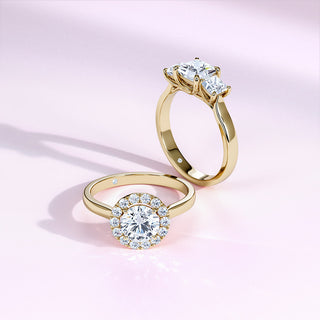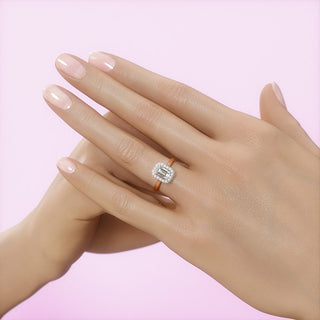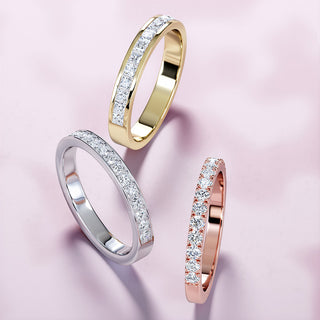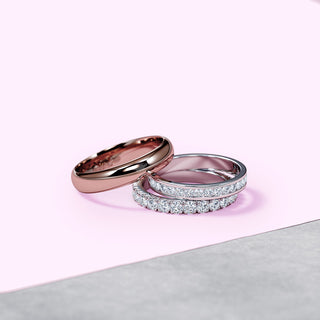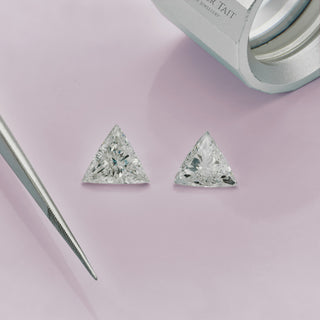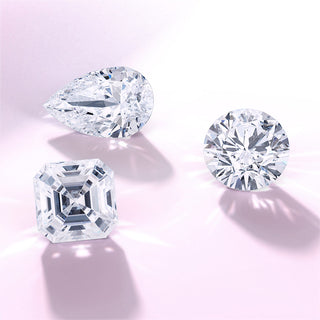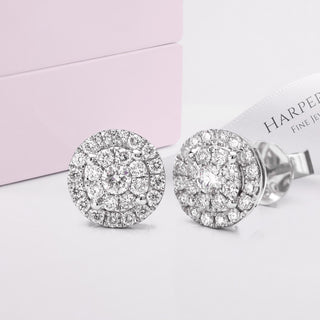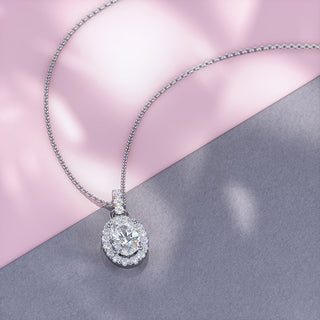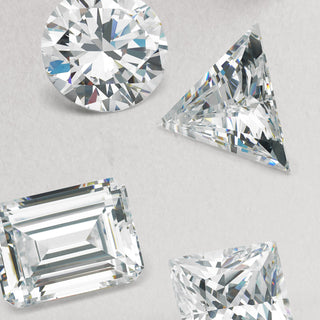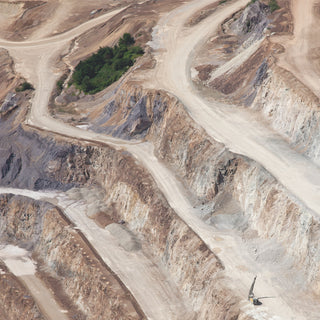What is an Oval Diamond?
Oval diamonds have similar facets to a round brilliant cut diamond, but in an elongated cut. Although the first oval diamond is said to date from the 1300s, the modern oval cut as we know it was designed in the 1960s. Since then, oval-shaped diamonds have quickly become one of the most popular fancy cuts. Like a round diamond, an oval diamond is a brilliant cut. Its facets are designed to maximise light and scintillation.

How Many Facets does an Oval Diamond have?
Oval diamonds have 58 facets, in a brilliant cut style.
What Makes an Oval Diamond Special?
Brilliant facets make oval diamonds wow with sparkle and fire, but the secret of oval’s popularity is in the shape. An oval cut’s elongated shape gives a larger ‘spread’ for the carat weight, meaning an oval diamond will appear larger than a round of the same carat weight. The elegant shape is also flattering to wear, helping to elongate the fingers.
How do you Know if an Oval Diamond is Well Cut?
Of the four Cs, diamond cut is one of the most important. But unlike round brilliant cuts, oval shape stones are not given specific cut grade,
Instead, it is left to diamond experts to choose the most beautiful stones based on a balance of factors - the symmetry of the facets, the quality of the polishing, and the balance of size and depth.

First, we consider the visual impact of the stone - how does the fire, brightness, and scintillation appear? Second, the design - how well proportioned is the diamond? Finally, we look at the craftsmanship - how skillfully has the diamond been cut and polished? While ovals are not given a cut grading, there are some suggested parameters for a well-cut stone, including;
Length to width ratio: The length to width ratio of a diamond measures how proportional it is. Diamonds which fall within these parameters will be most pleasing to the eye, with a more distinct and even shape. For an oval, an ideal length to width ratio is 1.35 to 1.45 - however there is flexibility for personal preference if you prefer a narrower or wider stone.
Table: The table is the largest, central facet of a stone. The table needs to be large enough to let lots of light into the diamond, but not so large that the upper facets don’t have room to sparkle. Look for an oval diamond with a table ratio between 54% – 65%
Depth: A diamond’s depth is the top-to-bottom measurement of a diamond, from its table to culet. The depth ratio compares this measurement with the overall width of the stone. The depth affects the visual balance of a diamond and its brilliance. If a stone is too shallow or deep the light will not refract properly, escaping through the base of the diamond instead of the top. Look for an oval diamond with a depth ratio between 58% – 68%.
Choosing a Diamond Cut Grade
Just like a round diamond, pay attention to the cut when selecting your oval diamond. When beautifully cut, an oval diamond’s facets create stunning sparkle. As oval stones are not given a formal cut grading, we use only hand-selected stones chosen for their quality and beauty.
Individual oval stones may be slightly wider or longer than the average cut, meaning they can look slightly rounder or slightly more elongated. Oval diamonds sometimes have a “bow tie” effect, where the side facets appear darker due to the way the elongated facets refract light. All oval diamonds will have some degree of bow tie, but longer stones show it more distinctly. This feature shouldn’t affect the beauty of a stone unless it is poorly cut - another reason we hand-select each diamond.
Choosing an Oval Diamond Colour
Like so much about choosing a diamond, colour grade comes down to personal preference. Colour is graded by letters, with the scale starting at D. A colourless diamond grade is anything from grades D to F.
Most diamond lovers prefer the cool, white hue of a ‘colourless’ diamond, which is why these shades are so highly prized. For grades G and below the diamond colour gets progressively warmer, beginning to draw tones of yellow or brown. Some customers like these warmer shades, or find they can’t easily tell the difference in a yellow or rose gold ring.
If you have chosen a platinum or white gold setting, the difference between the white metal and a warmer colour stone will be more obvious, so we advise going no lower than a grade F.
Choosing the Clarity of an Oval Diamond
Diamond clarity varies greatly, from perfectly clean stones to those with easily visible inclusions. Truly flawless diamonds are incredibly rare. Thanks to the dizzying sparkle of an oval diamond, small inclusions are not as visible to the naked eye. It means you can choose a slightly included grade and still enjoy an eye-clean diamond. Which is to say, you will not notice any flaws without magnification.
We advise a grade between SI1 and VS2 for brilliant cut stones under 3.00ct. At these grades you will not notice any inclusions - only incredible sparkle! For very large stones, a higher clarity may be advised. Please contact us and we can talk through your options.
Is an Oval Cut the Diamond for You?
If you’re taken by the incredible sparkle of a round brilliant cut but would love something a little different, an oval cut diamond may be the answer. The graceful curves of an oval look beautiful on anyone, particularly if you’d love a stone that visually elongates the finger. An elegant choice, the oval cut suits a sleek solitaire or luxurious diamond-set engagement ring. Choose a minimalist mount to create a modern look, or enhance the brilliance with a halo. Thanks to their elongated cut, ovals are fabulous for getting maximum “show” for your money, appearing visually larger than a round stone of the same carat weight.


